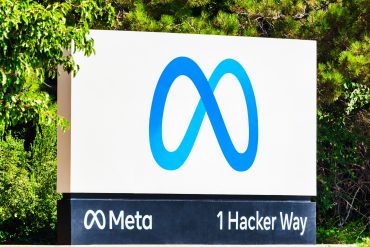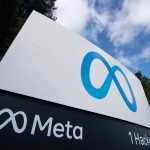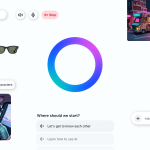
- AI Infrastructure
- Earnings Season
- Magnificent 7
Meta Reports $51 Billion Quarter as Ad Strength Balances AI Investment
9 minute read

Meta’s third quarter underscores a defining balance—advertising resilience continues to power growth even as AI and infrastructure costs climb to historic levels.
Key Takeaways
- Meta posted $51.24 billion in quarterly revenue, a 26 percent increase that reaffirmed the dominance of its advertising engine while absorbing $19.37 billion in capital expenditures.
- Operating income reached $20.55 billion with 40 percent margins, showing that core efficiency remains intact even as the company ramps up AI data centers and proprietary chip initiatives.
- Reality Labs losses persisted, but Family of Apps drove engagement across 3.54 billion daily active users, demonstrating that Meta’s ecosystem continues to expand while underwriting its long-term AI ambitions.
Ad Momentum Sustains AI’s Heavy Lift
Meta Platforms reported third-quarter revenue of $51.24 billion on October 29, a 26 percent advance that underscores advertising’s enduring pull even as capital commitments swell. The figure eclipses consensus forecasts, yet a $15.93 billion non-cash tax charge—tied to deferred assets from prior restructuring—eclipsed adjusted earnings of $18.64 billion, yielding reported net income of $2.71 billion and earnings per share of $1.05. This distortion masked underlying vigor: operating income of $20.55 billion at 40 percent margins, free cash flow of $10.62 billion, and capital expenditures cresting $19.37 billion to fuel data center expansion. Full-year capex guidance ascended to $70–72 billion, with chief financial officer Susan Li signaling 2026 outlays would intensify further, prioritizing proprietary infrastructure alongside third-party clouds.
Such investments reflect a deliberate wager on artificial intelligence’s transformative arc, where compute scarcity dictates frontier positioning. Mark Zuckerberg, in prepared remarks, emphasized Meta’s trajectory toward “superintelligence,” with nascent labs advancing multimodal capabilities. Yet the quarter also exposed tensions: Reality Labs’ persistent losses juxtaposed against Family of Apps’ scale, regulatory overhangs in Europe, and a market temperament soured by expense trajectories.
Advertising’s Bedrock, Augmented
Family of Apps, Meta’s revenue engine, delivered $50.77 billion, propelled by advertising impressions up 14 percent and average prices climbing 10 percent. Daily active people across platforms reached 3.54 billion, an eight percent increase, as algorithmic refinements—now incorporating generative AI interactions—sharpened feed relevance and discovery. Facebook and Instagram sustained engagement amid competitive pressures from short-form video rivals, while WhatsApp’s end-to-end encryption fortified commerce and messaging monetization. Threads, nearing maturity, contributed to cross-app synergies, with Zuckerberg noting its role in diversifying beyond core feeds.
This resilience stems from advertiser confidence in return on ad spend, bolstered by tools like Advantage+ shopping campaigns, which leverage AI for dynamic creative generation. Despite occasional anomalies—such as generative outputs yielding unconventional visuals—the system’s scale processes billions of daily interactions, yielding measurable lifts in conversion rates. European headwinds, including less personalized ads mandates, prompted a cautious outlook on potential revenue erosion, yet U.S. and emerging market strength offset these, with total ad revenue hitting $50.08 billion.
Reality Labs: Endurance Over Extraction
Reality Labs eked out $470 million in revenue, doubling from prior year on Quest headset and Ray-Ban Meta smart glasses sales, but operating losses held at $4.43 billion. Zuckerberg framed this as strategic patience: hardware serves as gateway to embodied AI, with Orion augmented reality prototypes hinting at lightweight form factors. Meta Connect 2025 showcased prototypes integrating Llama-derived models for real-time environmental understanding, positioning wearables as AI companions rather than isolated devices.
Quest’s ecosystem grew through content partnerships and social features, yet monetization lags hardware peers. The segment’s persistence—now a decade in—tests investor forbearance, but Zuckerberg’s vision ties it to broader AI ambitions: spatial computing as substrate for agentic systems that transcend screens.
Models, Talent, Infrastructure
Meta’s AI thrust manifests in layered bets. Llama 3.1, iterated for efficiency, underpins open-source diffusion, attracting developer ecosystems while retaining control over enterprise deployments. Recent launches include Meta Ray-Ban Display glasses, embedding heads-up AI assistance, and Vibes, a generative video tool enabling user-created clips with stylistic controls. These extend beyond novelty: AI now personalizes recommendations across apps, drawing on interaction histories to curate feeds and ads, a shift Zuckerberg described as foundational to retention.
Talent acquisition intensifies this edge. Meta has extended multimillion-dollar packages to researchers, rivaling hyperscalers in the race for expertise in scaling laws and multimodal training. Infrastructure demands follow: Zuckerberg anticipates “aggressive” data center builds, blending custom chips with NVIDIA partnerships to train models processing exabytes of social data. Superintelligence Labs, a dedicated unit, targets breakthroughs in reasoning and planning, with Zuckerberg signaling pipeline advancements in incorporating novel capabilities.
Yet execution hinges on regulatory navigation. The European Commission’s youth safety trials and personalization curbs loom, potentially clipping ad efficacy; U.S. scrutiny, via FTC probes into acquisitions, persists. Meta’s 10-Q filing for the period ending September 30 details these exposures, alongside litigation reserves, affirming compliance investments without derailing core operations.
Market’s Measured Response
Equities recoiled post-release, with shares sliding seven to nine percent in after-hours trading to around $690 from a $752 close—the steepest among megacap peers that day. The S&P 500, where Meta commands weighting, closed flat amid broader tech rotation, while Nasdaq’s 0.6 percent gain masked volatility. Analysts parsed the tax anomaly as non-recurring, with revenue beats and user growth tempering concerns, yet capex escalation—now rivaling peers’ AI outlays—prompted revisions to valuation multiples. Seeking Alpha contributors viewed the dip as opportunity, upgrading to buy on long-term AI optionality. Year-to-date, Meta had ascended 28 percent pre-earnings, buoyed by AI narratives, but the quarter’s optics underscore sensitivity to margin compression.
Nasdaq listing data reflects this: trading volume surged to 25.8 million shares on October 29, with implied volatility spiking on guidance. S&P inclusion amplifies scrutiny, as index funds absorb flows tied to Meta’s performance in communication services.
Navigating the Political Currents
Zuckerberg’s pivot toward the incoming Trump administration marks a pragmatic recalibration. Once criticized for content moderation, Meta now pledges $600 billion in U.S. investments by 2028, emphasizing domestic AI infrastructure to align with national priorities. Private meetings with Attorney General nominee Pam Bondi and White House engagements signal intent to “redefine relationships with governments,” per Zuckerberg, potentially easing FTC pressures on deals like recent AI talent hires. This contrasts prior tensions, positioning Meta to advocate for lighter-touch regulation on data use and open models, amid Trump’s tech-friendly rhetoric.
Such alignment could expedite approvals for AR/VR spectrum access or antitrust leniency, though risks linger if partisan divides resurface over platform policies.
Forward Calculus
Q4 revenue guidance of $56–59 billion implies sustained ad momentum, with full-year expenses at $116–118 billion absorbing AI ramps. Zuckerberg’s closing note—”significant growth opportunities”—centers on AI’s compounding effects: from glasses adoption to agent proliferation.
For stakeholders, Meta embodies tension between proven cash generation—$10.62 billion free cash flow—and speculative scale. Advertising’s maturity funds metaverse persistence and AI moonshots, yet execution demands flawless calibration. Balance sheet fortitude, with $79 billion in liquidity equivalents inferred from prior quarters, affords runway.
In a landscape where social data fuels intelligence, Meta’s corpus confers asymmetry. The quarter’s tumult—tax artifact aside—affirms adaptability. Investors weigh near-term dilution against decade-long primacy; regulators, innovation’s societal toll. Zuckerberg’s gambit: AI not as bolt-on, but essence. Equilibrium holds, for now.







